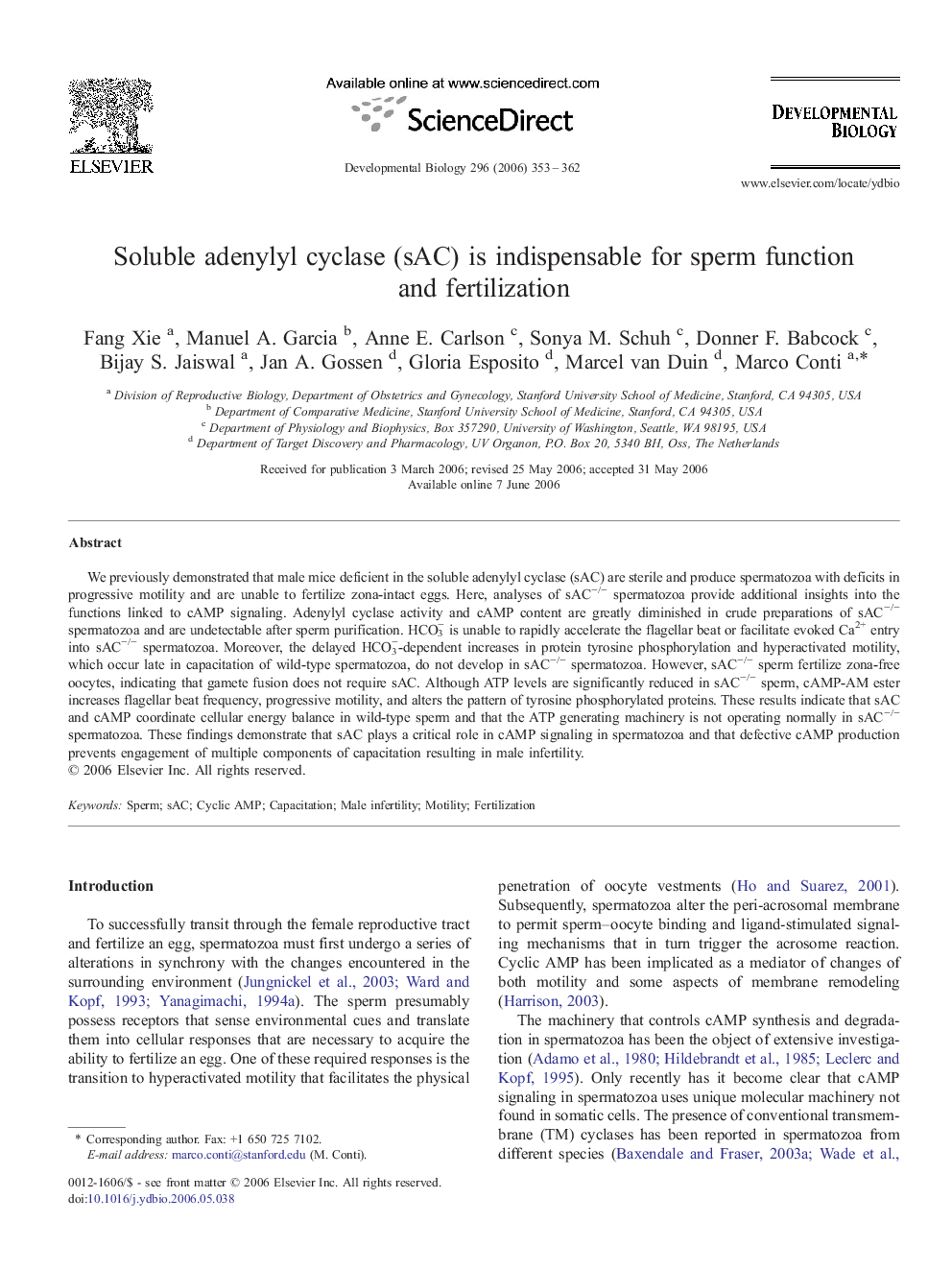| کد مقاله | کد نشریه | سال انتشار | مقاله انگلیسی | نسخه تمام متن |
|---|---|---|---|---|
| 2175826 | 1093854 | 2006 | 10 صفحه PDF | دانلود رایگان |

We previously demonstrated that male mice deficient in the soluble adenylyl cyclase (sAC) are sterile and produce spermatozoa with deficits in progressive motility and are unable to fertilize zona-intact eggs. Here, analyses of sAC−/− spermatozoa provide additional insights into the functions linked to cAMP signaling. Adenylyl cyclase activity and cAMP content are greatly diminished in crude preparations of sAC−/− spermatozoa and are undetectable after sperm purification. HCO3− is unable to rapidly accelerate the flagellar beat or facilitate evoked Ca2+ entry into sAC−/− spermatozoa. Moreover, the delayed HCO3−-dependent increases in protein tyrosine phosphorylation and hyperactivated motility, which occur late in capacitation of wild-type spermatozoa, do not develop in sAC−/− spermatozoa. However, sAC−/− sperm fertilize zona-free oocytes, indicating that gamete fusion does not require sAC. Although ATP levels are significantly reduced in sAC−/− sperm, cAMP-AM ester increases flagellar beat frequency, progressive motility, and alters the pattern of tyrosine phosphorylated proteins. These results indicate that sAC and cAMP coordinate cellular energy balance in wild-type sperm and that the ATP generating machinery is not operating normally in sAC−/− spermatozoa. These findings demonstrate that sAC plays a critical role in cAMP signaling in spermatozoa and that defective cAMP production prevents engagement of multiple components of capacitation resulting in male infertility.
Journal: Developmental Biology - Volume 296, Issue 2, 15 August 2006, Pages 353–362